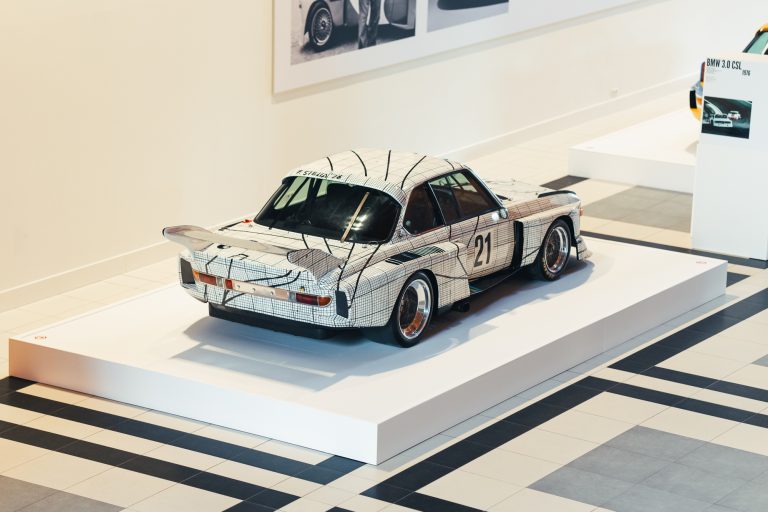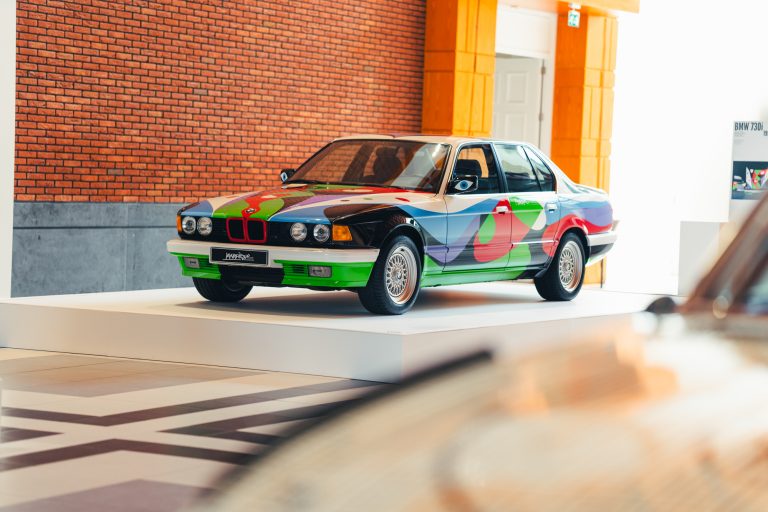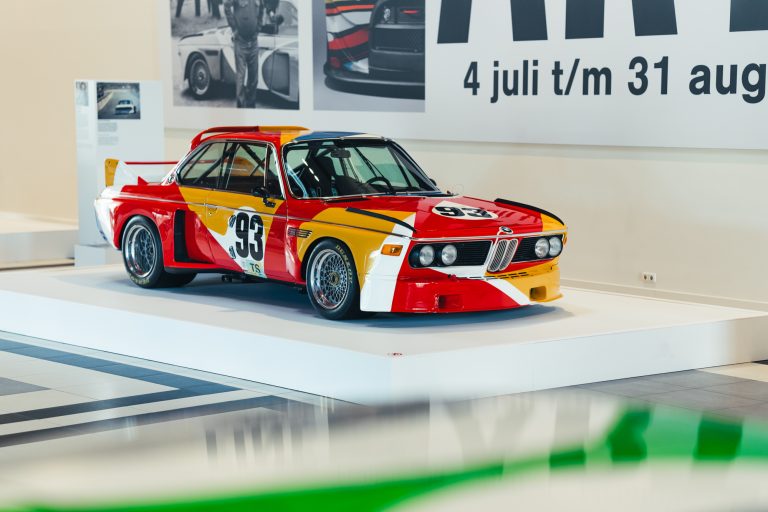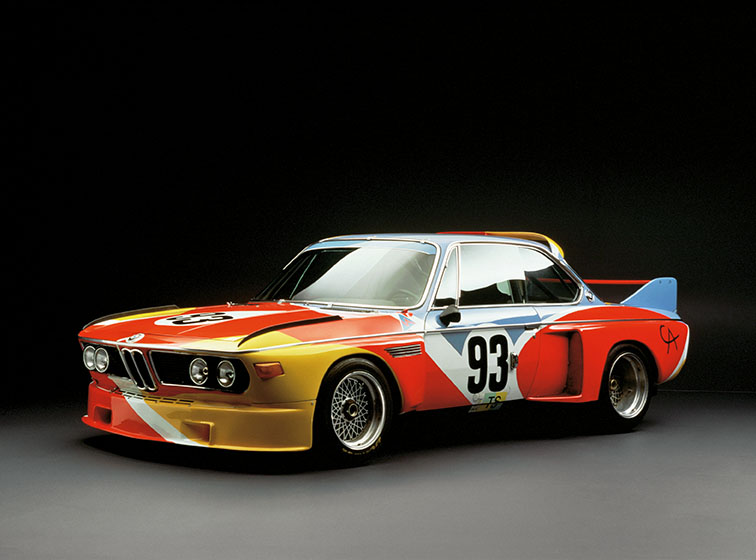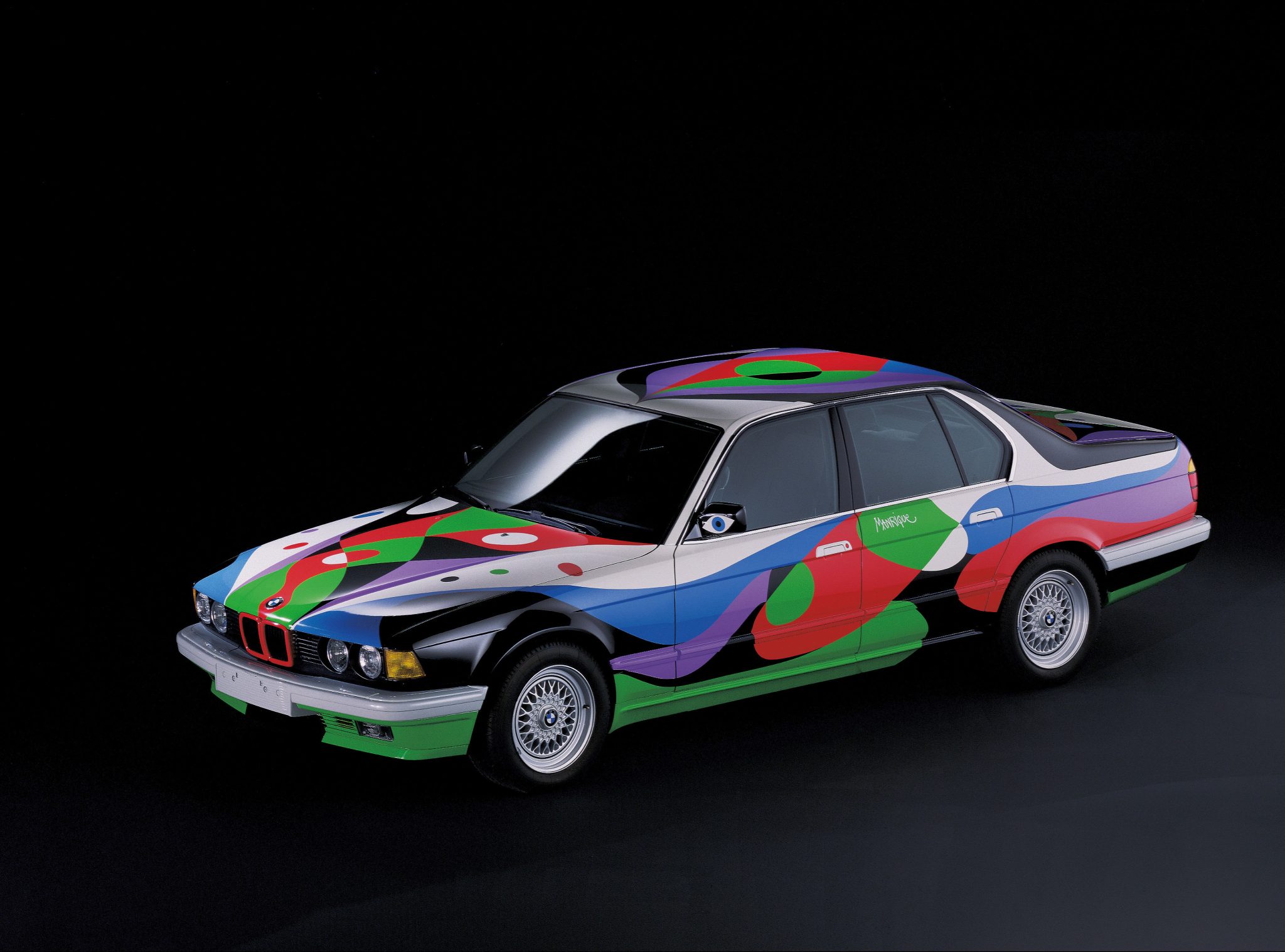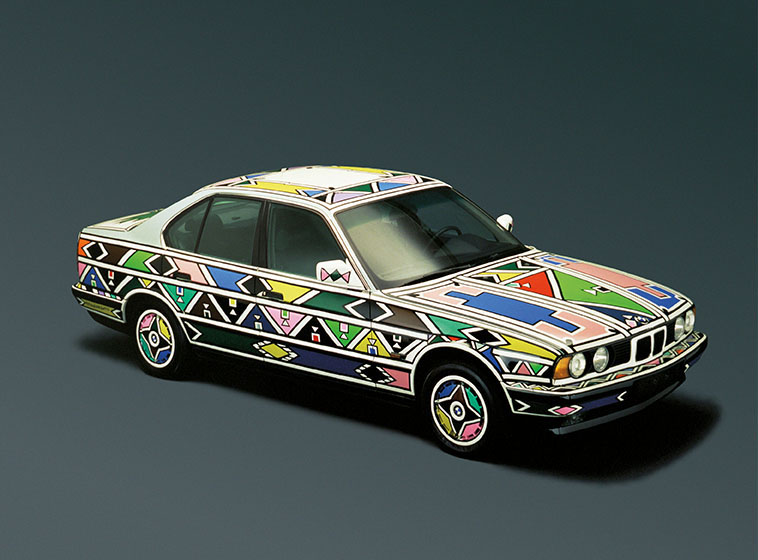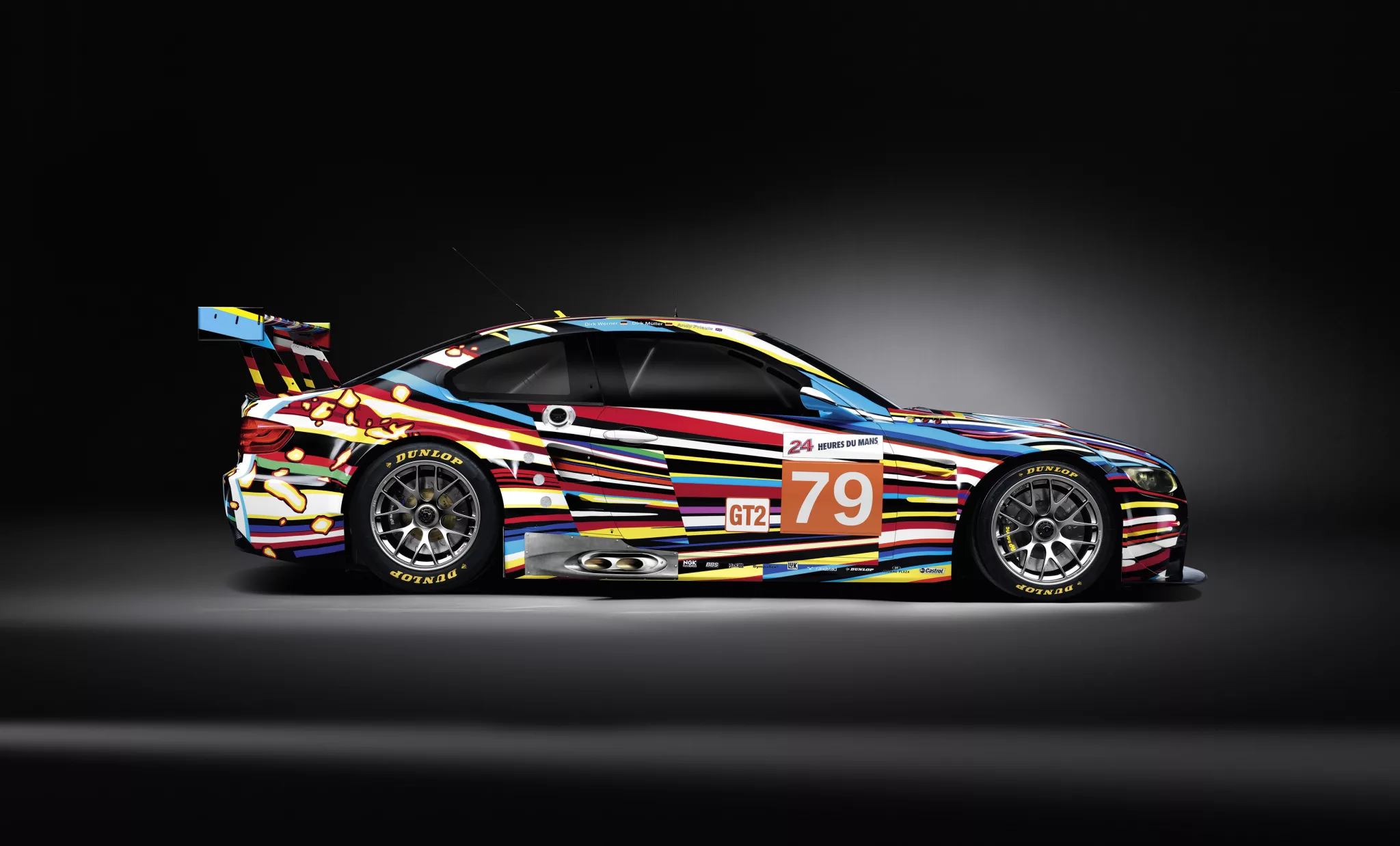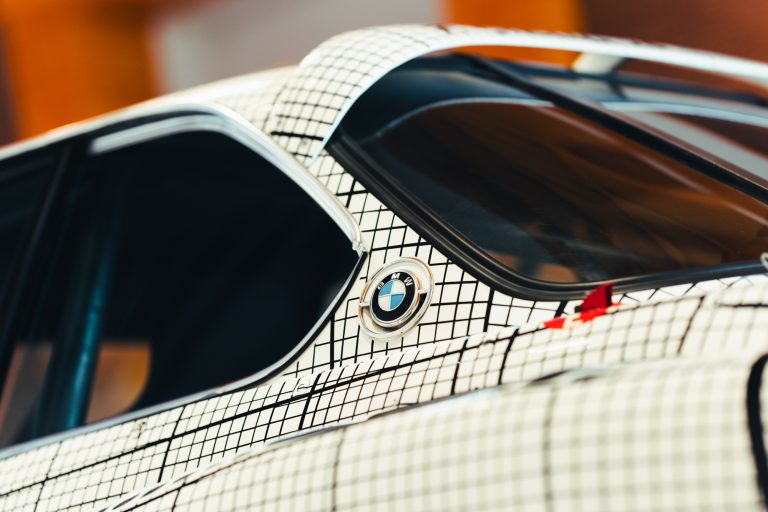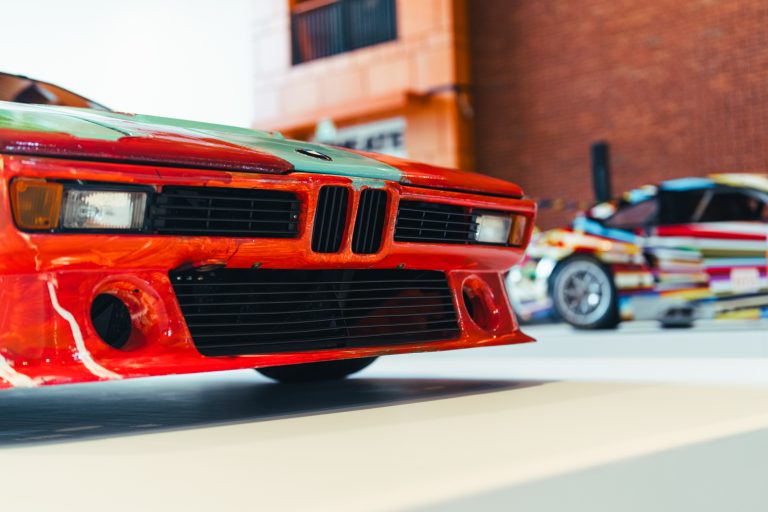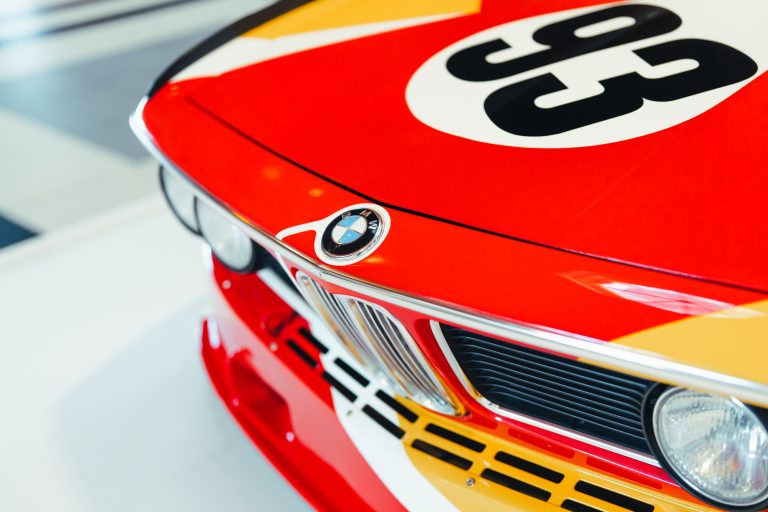The extraordinary BMWs form the heart of the Art Car Collection, each with a unique
design that brings together art and technology. What began with a Le Mans race car
painted by Alexander Calder has grown into a series of iconic models, ranging from pure
racing cars to exclusive road cars. Each Art Car tells its own story, from speed on the
racetrack to a place in the world’s most prestigious museums. Discover the BMW Art Cars
and the special designs that make them so unique.
BMW 3.0 CSL
Alexander Calder
The BMW 3.0 CSL, with which Alexander Calder laid the foundation stone for the Art Car Collection in 1975, was also one of his last works of art before his death. As a sculptor who was normally accustomed to producing shapes of his own, he was able to break free of the formal restraints imposed by the automobile and subjected it instead to his own artistic style. As with his sculptures and mobiles, he returned to powerful colors and attractive curving expanses which he applied generously to the wings, hood and roof.
Discover the carBMW 3.0 CSL
Frank Stella
Stella’s design was inspired by the technical basis of the object itself. The result was a was black and white grid of lines that looked like oversized graph paper. This racing car, with its powerful 750 hp engine, stood out from its many competitors in the starting field, especially the more colourful ones.
Discover the carBMW 320i gruppe 5 rennversion
Roy Lichtenstein
American Pop artist Roy Lichtenstein used the ‘Ben Day dots’ characteristic of his famous comic strip paintings to create the effect of a landscape seeming to move past on the flanks of the BMW. This racing car did not immediately become an exhibit, but first proved itself in tough everyday motorsport, and where else but at Le Mans? In his own words: “I wanted the lines I painted to be a picture of the road that showed the car where it had to go.”
Discover the carBMW 635 CSi
Robert Rauschenberg
Robert Rauschenberg’s BMW 635CSi was the sixth Art Car in the series, but the first to be adorned with photographic material. On the right side appears an odalisque by Ingres; on the left, a painting by Bronzino, framed by Rauschenberg’s own photographs of swamp grass from the Everglades. The hubcaps are decorated with images of antique decorative plates. By blending classical art, natural imagery, and technical innovation, Rauschenberg created a moving collage — a striking example of collage as an independent art form. At the same time, the car serves as a subtle social commentary on the relationship between humans, mobility, and the environment.
Discover the carBMW 730i
César Manrique
Spanish avant-gardist César Manrique took the nature of the Spanish subtropical island of Lanzarote as his model, employing elements of nature in the bright colors and abstract shapes on the bodywork. The black component of the design stands for the Canary Island’s lava rock, green for the rainforest, red for life. You can also see in the flowing shapes what Manrique sees as essential for an automobile: the speedy transportation of its occupants.
Discover the carBMW 525i
Esther Mahlangu
South African Esther Mahlangu was the woman to design a vehicle in the Art Car series. The design is readily understood as an homage to African culture. Specifically, it relates to “how my tribe decorate their houses,” as Mahlangu explained the design, known as the Ndebele pattern. A tradition that is passed on from generation to generation – and exclusively among women. Within a week, she had transformed the car into a masterpiece of African Ndebele art.
Discover the carBMW 850 CSi
David Hockney
Famous British artist David Hockney was persuaded by BMW to create this Art Car. Hockney’s BMW 850 CSi was the result of a long design process, because it’s not just about applying a little paint, as the pop artist explained. Instead, he took the car apart through his painting, turning it completely inside out. In this way he brought to the surface what he believes lies beneath the skin of the car, the bodywork, namely the car’s fascinating technology.
Discover the carBMW M3 GT2
Jeff Koons
Inspired by speed, power and the thrill of racing, Koons wanted to capture the intensity of the competition with an explosion of colour and dynamic stripes. The result is a powerful racing machine that looks as if it is moving, even when it is standing still. His design uses vibrant stripes of colour to represent the dynamic movement of the car, symbolising bursts of energy as it races around the track. The overlapping lines and vibrant colours evoke a sense of excitement, making the BMW M3 GT2 a true fusion of art and motorsport.
Discover the car
